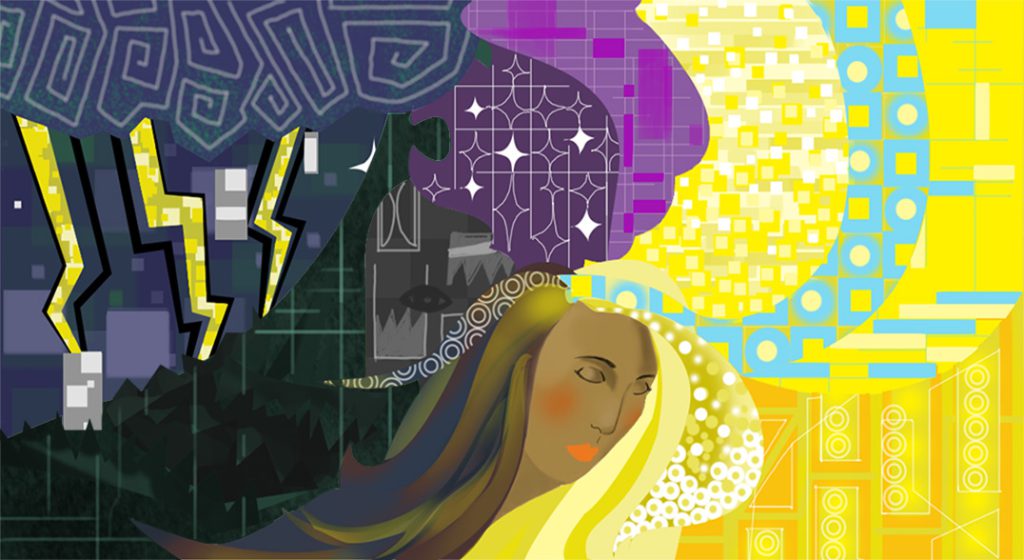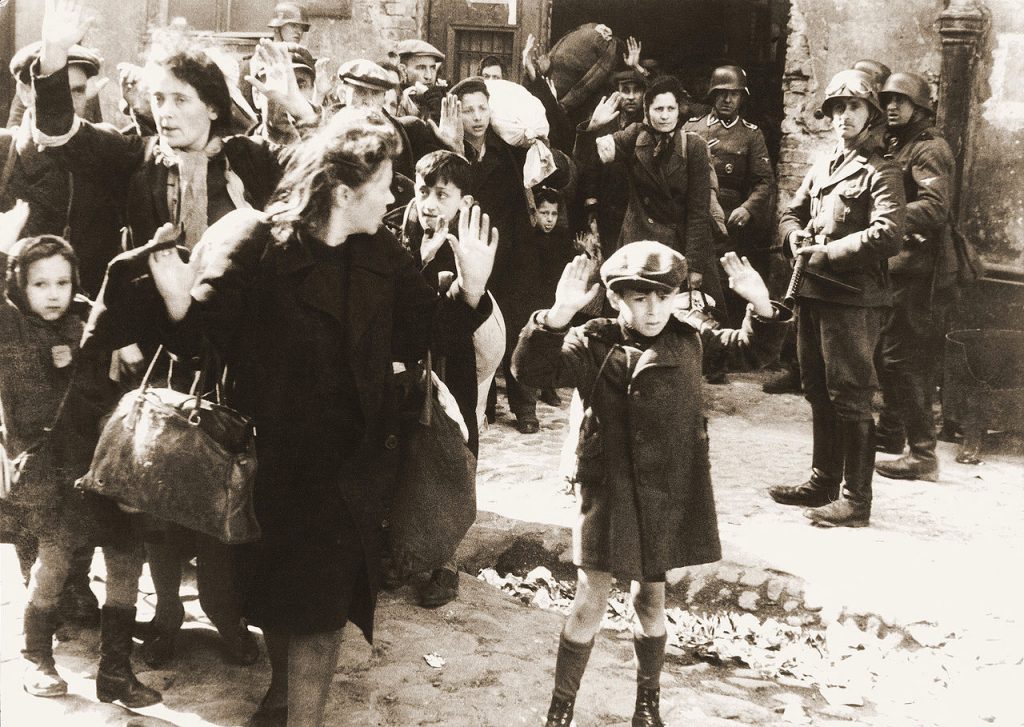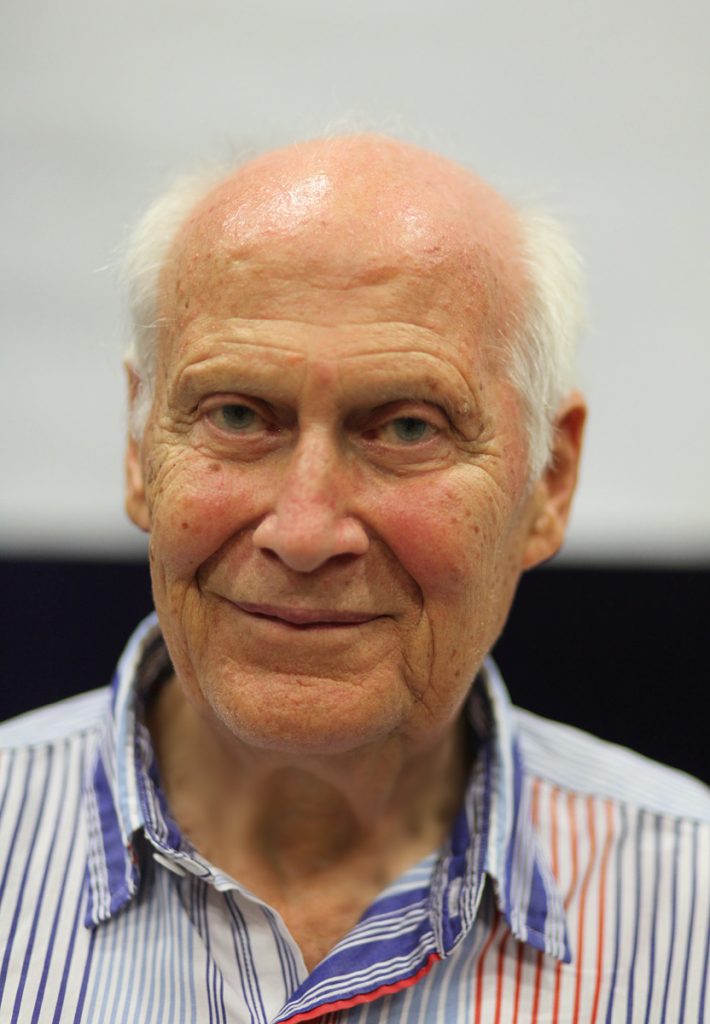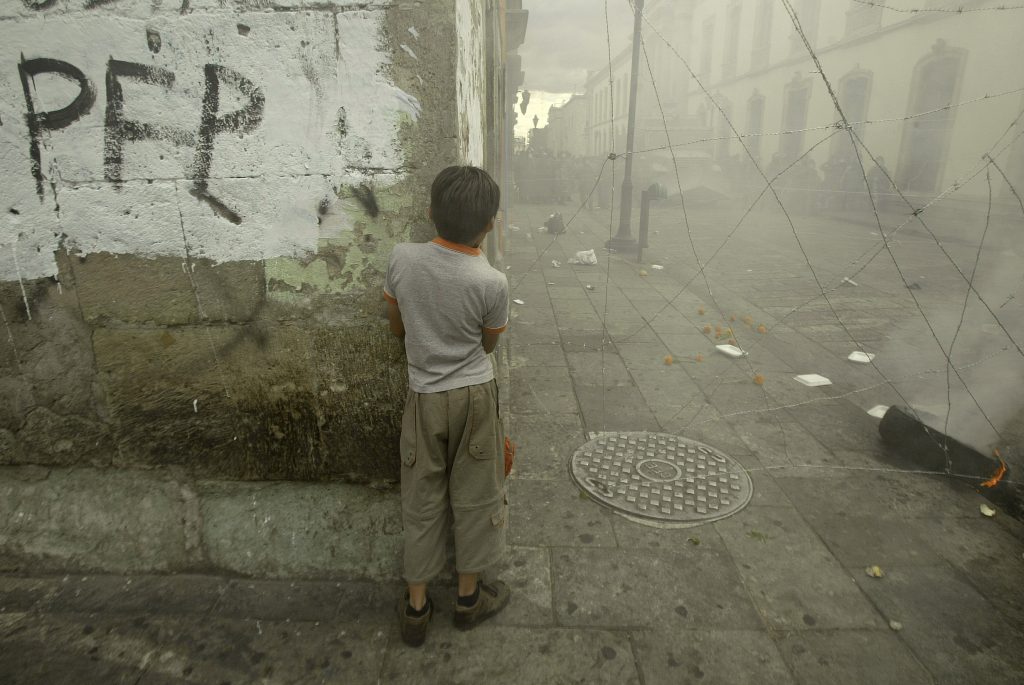An Alternative Therapy Hits Home in Mexico

It’s a stormy evening in the summer of 2015 in Oaxaca City, Mexico, and I am seated in a small yoga studio with three other women: Flora, a teacher in her 30s; Maritza, a homemaker in her 50s; and Lydia, a Oaxacan woman in her 30s who will act as our facilitator. (Their names have been changed to protect their privacy.) We have braved the flooded streets to arrive, and Lydia leads us in a brief meditation to calm our minds and help us become more present in the space.
We are here for a session of Family Constellations therapy, one of the fastest-growing psychological therapies in the world. Developed in the 1990s by German psychotherapist and former Jesuit priest Bert Hellinger, Family Constellations has become a global phenomenon over the past two decades. Thousands of psychologists, psychiatrists, counselors, and other mental health therapists from more than 35 countries on five continents have been trained in the practice. It brings together Western psychology with Zulu cosmological beliefs and ancestor reverence, cultural traditions that Hellinger observed as a missionary in South Africa during the 1950s and 1960s. Family Constellations is a distinctively postmodern form of therapy: a pastiche of Indigenous healing and Western psychology that is popular among today’s educated urbanites.
The main premise of Family Constellations is that our problems can be resolved by identifying unconscious loyalties to our ancestors and by exploring intergenerational traumas, secrets, and conflicts. In Germany, where the practice was founded and where it has become almost mainstream, some therapists have suggested that the therapy might help ease trauma passed down through generations of families who have experienced widespread conflict and violence. For example, Holocaust victims and those who are descended from war criminals use Family Constellations to come to terms with the ongoing psychological repercussions of World War II.
But why is Family Constellations gaining traction in other regions around the world, like Mexico? This question gets to the heart of one of the most intimate and underexplored aspects of globalization: its impact on people’s conceptions of who they are, what they should feel, and how they should behave.
Critics have claimed that the global spread of therapeutic practices and concepts of mental illness, many of which have been developed in Western Europe and the United States, shows an insensitivity to local customs and destroys traditional beliefs and therapies. Yet this is by no means the only possible outcome. My research in the city of Oaxaca reveals a different story. Over two months, I participated in more than a dozen different Family Constellations sessions at three different centers and interviewed 15 participants and practitioners. This is the tale of how a rapidly globalizing form of therapy can actually reinforce, rather than negate, local cultural norms, for better or worse.
Family Constellations was first brought to Mexico in 1994. While the therapy is still not as widely known in the region as it is in Europe, Mexico is now home to hundreds of Family Constellations practitioners and workshops. Oaxaca, the capital city of the state with the same name, has at least seven separate Family Constellations groups that meet regularly, and many of the city’s practitioners hold private clinics or integrate the practice into other professional activities. People tend to find out about Family Constellations through word-of-mouth, though some facilitators do advertise with signs and on social media. More established groups consistently draw up to 15 participants, usually a blend of newcomers and veterans, men and women.
On this evening, as rain beats on the metal roof of the yoga studio, Lydia announces that the evening’s constellation will focus on Flora and her relationship with Pedro, her former partner and the father of her young son. Pedro has recently come back to Oaxaca after a long absence. The former couple has been estranged for many years, and although Flora is still attracted to him, she wants to summon the strength to break things off permanently.
Unlike psychotherapy, Family Constellations isn’t based on participants narrating stories of their own lives; indeed, they are actively discouraged from saying too much about themselves. Instead, the facilitator pays attention to a web of relationships, not solely the experiences or interpretations of the “focus client.” Other participants are asked to channel, or “represent,” the family members—alive and dead—of that client.
Focus clients also typically select someone to represent themselves. Flora gets up to choose one “representative” for Pedro and one for herself. She stands, walks over to me, and puts her hands on my shoulders. “I request that you represent me,” Flora says, looking into my eyes. I nod my agreement. (I have told all participants, as I always do, that I am there to study the session as an anthropologist and out of personal interest in the therapy.) Flora then asks Maritza to represent Pedro.
Lydia asks Flora to close her eyes and imagine her relationship with Pedro, then instructs her to open her eyes and position the representatives in a way that best reflects that relationship. Flora guides me toward Maritza, whose facial expression hardens as soon as we are within arm’s length of each other. Maritza, as Pedro, looks in the other direction, studiously avoiding eye contact with me.
“How is the representative of Flora feeling?” Lydia asks me. “I feel insecure,” I answer. “I want Pedro to acknowledge me, but he refuses.” I move slowly toward Maritza, but she moves farther away from me.
Most people attending a Family Constellations session for the first time express a sense of trepidation and ask questions like, “Do I have to be a good performer?” or “How will I know what to say?” They also sometimes ask, “Are we channeling the dead?” Although many constellations involve ancestors long deceased, practitioners insist that this is not spirit possession, nor is it a dramatic role-playing performance. Rather, according to Family Constellations professionals, representatives are tapping into the “energy” of the family system and “morphic fields” (or what some call a family’s “collective unconscious”)—a process that facilitators say can be explained by “quantum physics.”
However, facilitators typically don’t elaborate on how quantum physics supposedly explains the process. The important thing is for family dynamics—and secrets—to be revealed through representatives’ actions and feelings. Once representatives are chosen, facilitators interpret each of their movements, words, and reported feelings as information about the person being represented. Regardless of whether attendees really behave like the real people they represent, the resulting externalization of the experience, along with the supportive energy in the room, can prove both revelatory and comforting to many participants.
But attending these sessions can also be a surreal and unsettling experience. I have represented deceased great-grandparents, adopted children, and spurned lovers. I have witnessed representatives screaming, crying, gagging, and tearing at their hair. In my own constellation, my father’s representative suggested he was unhappy in the afterlife. The experience of being constellated was intense and cathartic, and it made me think about my life in new and revealing ways. In all constellations, the client is directly guided to recognize and honor family dynamics and the ancestors involved, with the goal of restoring family connection, hierarchy, and equilibrium.
As Maritza and I report how we feel as representatives of Pedro and Flora, Lydia begins to take on a more active role, generating a hypothesis about Flora’s family dynamics and helping to sculpt the story that emerges. She asks Flora for more information about her parents’ relationship. Flora somewhat bitterly explains that her mother had stayed with her father despite the fact that he was physically abusive toward her. Lydia decides to bring Flora into the constellation to stand next to me, her representative. She carries a folding chair over to represent Flora’s mother since we don’t have more people available, and tells us both to look at the chair.
“How does it feel to look at your mother?” Lydia asks. Flora and I both say we feel uncomfortable. Lydia goes on, “Say to your mother, ‘I’m better than you.’” We hesitantly obey. Lydia takes the process a step further and asks us to stand on chairs and say again, this time from a position of height and power, “I’m better than you.” Flora and I do so, both of us choking up. “How does it feel to be bigger than your mother?” Lydia asks. Flora begins crying. “I just want to get down off of this chair,” she pleads.
Lydia explains that our discomfort comes from a disruption of the rules of family hierarchy. According to Hellinger’s teachings, children must always honor and respect their parents, irrespective of their parents’ decisions or transgressions. While parents can apologize to their children, they are never supposed to ask for forgiveness or pardon. “When this hierarchy is respected by all members of the family,” Hellinger says, “love can flow freely.” If it is upset, order must be restored.
Lydia tells Flora that she needs to refrain from judging her mother for remaining with her father in the face of abuse. She says that Flora had found a “man who would leave her” alone with a child so she could demonstrate that she was stronger than her mother, who had likely stayed in the relationship with Flora’s father because of their children. “You wanted to show her that it’s possible to do it alone, to work and to raise a child without a man,” says Lydia. In Lydia’s view, Flora created an imbalance in the family system that is now manifesting as her inability to move on.
To restore balance between Flora and her mother, we prostrate ourselves in front of the chair representing her. Following Lydia’s instructions, we both lie on our bellies with our arms out and foreheads on the ground, repeating the line she feeds us, “I’m sorry I disrespected you.” To give Pedro his rightful place as a father, Flora and I face Maritza and say, as if to Pedro, “Thank you for giving me a son. I am now breaking off my relationship with you, but I give you permission to have a relationship with our son.”
Family Constellations reinforces the idea that we are each deeply embedded within our family relationships, however conflicted, frayed, or even oppressive those relationships might be. This resonates in a country that has strong traditions of family kinship. It also counters the erosion of family bonds brought on by sociocultural change and modernization.
Many of the people I interviewed in Oaxaca said that demand for psychological therapy has boomed over the past two decades because of the emotional distress caused by economic anxiety, globalization, and deprivation; political conflict; migration; and changing family structures. Records that the state’s public psychiatric hospital shared with me, which I discuss in my upcoming book with the working title Transforming Therapy: Mental Health Practice and Cultural Change in Mexico, show that the number of consultations at the facility has almost quintupled—from just over 2,500 per year in the early 1990s to about 12,000 per year currently.
Unlike forms of therapy that encourage people to become more independent and self-reliant, Family Constellations acknowledges and cultivates a sense of familial interdependency. As a therapy that accentuates, rather than challenges, traditional kinship patterns, Family Constellations may help alleviate feelings of alienation brought about by a rapidly changing world. In the words of one Oaxacan Family Constellations practitioner, “What we’re doing in constellations is reconstructing that social-familial fabric. Since Oaxacan culture is so family oriented, [the] constellations [approach] is like saying ‘Great, you’re on the right path.’”
But while Family Constellations reinforces local cultural norms about the importance of intergenerational family ties, it also has the effect of reproducing problematic views toward women and nontraditional family structures. In nearly all the Family Constellations sessions I have attended, one form of nontraditional kinship pattern or another has been stigmatized—such as those that include divorced and single parents, adopted children, and homosexual relationships. Many constellations in Oaxaca center on the mistreatment of daughters, mothers, grandmothers, and great-grandmothers by men who are authoritarian, sometimes physically abusive, and often unfaithful. In Flora’s case, her father had been abusive, and Pedro had left her to raise their son alone. Yet, from what I have observed, the facilitators tend to guide the constellations in a way that suggests the responsibility for such problems lies with the women: in this case, with Flora and her mother.
This patriarchal aspect of Family Constellations, among others, has led to various critiques of Hellinger’s ideas and methods. Some people have even claimed that participants have become psychotic or suicidal after participating in the therapy. Notably and distressingly, Hellinger has suggested that incest and rape can create a bond between perpetrator and victim that confers “strength and dignity” upon the victim. However, very few studies have evaluated the efficacy of Family Constellations and none, to my knowledge, have explored the gendered impacts of the therapy.
For their part, rarely did the participants I observed seem disturbed by the gender implications of their constellations. On the contrary, they appeared to identify with the power of witnessing their own links to intergenerational family systems. I concluded that participants may recover a lost sense of belonging, which allows them to move forward in their lives.
At the end of Flora’s constellation, we sit in a circle to debrief. Lydia asks Flora if she feels ready to leave Pedro for good and find a new partner. Even though the constellation work suggested that Flora brought on most of her problems herself, she is now beaming. “I’m ready,” she says, thanking each of us for our role in revealing her family patterns and empowering her to overcome them. Thanks to Family Constellations, her problems are no longer isolated from the collective history of her relatives and ancestors. For Flora—as for a growing number of people around the world—that seems to provide a great deal of relief.

































